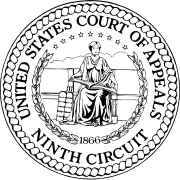Perfect 10, Inc. v. Google Inc.
| Perfect 10, Inc. v. Amazon.com, Inc. | |
|---|---|
 |
|
| Court | United States Court of Appeals for the Ninth Circuit |
| Full case name | Perfect 10, Inc. v. Amazon.com, Inc. and A9.com Inc. and Google Inc. |
| Argued | November 15, 2006 |
| Decided | May 16, 2007 |
| Citation(s) | 508 F.3d 1146 |
| Case history | |
| Prior action(s) | Grant of partial injunctive relief: Perfect 10 v. Google, Inc., 416 F. Supp. 2d 828 (C.D. Cal. 2006). |
| Holding | |
| Use of thumbnails in image search engine is fair use; Central District of California reversed | |
| Court membership | |
| Judge(s) sitting | Cynthia Holcomb Hall, Michael Daly Hawkins, and Sandra S. Ikuta |
| Case opinions | |
| Majority | Ikuta, joined by Hall, Hawkins |
| Laws applied | |
| 17 U.S.C. § 107 | |
Perfect 10, Inc. v. Amazon.com, Inc., 508 F.3d 1146 (9th Cir. 2007) was a case in the United States Court of Appeals for the Ninth Circuit involving Perfect 10, Inc., Amazon.com, Inc. and Google, Inc. The court held that Google's framing and hyperlinking as part of an image search engine constituted a fair use of Perfect 10's images because the use was highly transformative, overturning most of the district court's decision.
Perfect 10 was an adult entertainment magazine that featured sexually provocative images of women. It also operated a subscription-only website featuring such images and leased some of these images to other businesses. A number of independent, third-party web site publishers placed images obtained from Perfect 10's subscription-only area on their own websites, violating Perfect 10's terms of service and copyright. Google crawls, indexes, and caches websites on its internal servers so they can be accessed quickly. The sites crawled included many of these third-party sites containing infringing images. As part of their image search service, Google also provides thumbnail copies of the images that are being searched for so the user may see them before accessing the website. Furthermore, when a user selects an image from a Google search, a new page is accessed that includes the original website as well as a frame that contains information about the image and the thumbnail version of the image. Google did not store or physically transmit the full images, only their thumbnails.
Perfect 10 believed the linking constituted instances of secondary copyright infringement, and the caching and thumbnails constituted direct infringement. Acting on this, beginning in May 2001, Perfect 10 began sending notices to Google informing it of specific links to infringers in its general Web search and requesting their removal. In May 2004, it began sending similar notices for Google's comparatively new image search (first offered in 2003). Google states that it complied with the notices where it could find the infringement and determine that it was in fact an infringement, removing them from Google Search. However, it noted that it was unable to do this in many cases due to deficiencies in the requests. Perfect 10 sent Google infringement notifications for nearly 4 years, eventually filing suit against both Google and Amazon for similar activities. Perfect 10 requested injunctions against Google and Amazon from linking to websites displaying Perfect 10's images and, in the case of Google, displaying the thumbnail images.
...
Wikipedia
